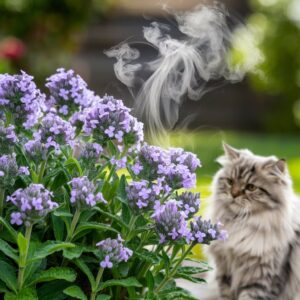
Catnip How to Spot Low-Quality and Buy Only the Best
High-Quality Catnip: Tips for Avoiding Low-Quality
Lack of Potency and Weak Aroma
One of the most apparent signs of low-quality catnip is the lack of potency. If your cat shows little to no interest in the catnip, it may indicate that it is not high-quality. Additionally, if the catnip does not have a strong aroma, it may indicate that it is not pure or has been sitting on the shelf for too long.
Presence of Stems and Leaves
Low-quality catnip may also contain many stems and leaves, which do not contain as much nepetalactone as the plant’s flowering tops. This can lead to a less effective and enjoyable experience for your cat.
Impurities and Additives
Another sign of low-quality catnip is the presence of impurities or additives. Some manufacturers may add fillers or other substances to their catnip to cut costs or enhance the product’s appearance. These additives can be harmful to your cat and may cause adverse reactions.
Choosing High-Quality Catnip
It’s important to carefully inspect the packaging and choose catnip from pure, organic ingredients to ensure your pet’s safety and enjoyment. By being aware of these signs, you can avoid purchasing low-quality catnip and provide your cat with a safe and enjoyable experience.
 The Benefits of Organic Catnip for Your Feline Friend
The Benefits of Organic Catnip for Your Feline Friend
Organic catnip provides various benefits to your kitty companion. To begin with, organic catnip is grown without synthetic pesticides or fertilisers, so it is devoid of potentially dangerous substances for your cat. This makes organic catnip a safer choice for your pet, especially if they are sensitive or allergic to specific ingredients.
Organic catnip, often grown in more natural and ecological surroundings, offers a higher-quality product overall. This, coupled with its higher potency and scent than non-organic kinds, ensures that your cat is more likely to react strongly and positively when it comes into contact with organic catnip.
The higher concentration of nepetalactone in organic catnip can provide hours of enjoyment and stimulation for your cat, which can benefit their general health.
In addition to being safer and more potent, organic catnip promotes sustainable and environmentally beneficial techniques. By purchasing organic catnip, you support farmers by prioritising ethical and sustainable production practices.
By choosing organic catnip, you benefit your cat and contribute to a healthy environment for all living things. Organic catnip promotes sustainable and environmentally beneficial techniques, supporting farmers in prioritising ethical and sustainable production practices.
Tips for Selecting High-Quality Organic Catnip
When choosing high-quality organic catnip for your feline companion, there are various variables to consider. First, search for catnip made entirely from organic materials. This assures that the product is free of synthetic pesticides, herbicides, and fertilisers that could harm your pet.
Additionally, choose catnip prepared from the plant’s flowering tops, which have the maximum concentration of nepetalactone and are more likely to evoke a significant reaction from your cat. It is also critical to select fresh organic catnip with a strong fragrance. Freshness is essential for catnip, as older or stale catnip can lose its strength over time.
A strong aroma suggests the robust catnip will give your pet a delightful experience. Furthermore, try buying organic catnip from respected brands or suppliers who value quality and purity in their products. Finally, when selecting organic catnip, think about your cat’s tastes.
Remember, each cat is unique and may have specific preferences when it comes to catnip. Some may prefer dried leaves, while others may enjoy catnip-infused toys. By considering your cat’s tastes, you demonstrate your attentiveness and ensure they have the best experience with high-quality organic catnip.
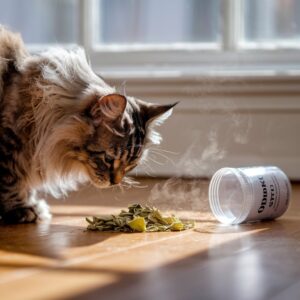 How to Store High-Quality Catnip to Maintain Its Freshness
How to Store High-Quality Catnip to Maintain Its Freshness
Once you’ve chosen high-quality organic catnip for your kitty friend, you must store it properly to keep it fresh and potent. One of the best ways to do so is to preserve catnip in a sealed container in a cool, dark place. This protects the catnip from light, air, and moisture, preserving its aroma and potency.
Another effective way to store high-quality catnip is to utilize the power of cold temperatures. Storing catnip in the fridge or freezer can significantly extend its freshness. However, using an airtight container is important to prevent the catnip from absorbing odours from the refrigerator or freezer.
If you buy fresh catnip, you can dry it yourself to increase its shelf life. Hang the fresh catnip in a dry, well-ventilated place until it completely dries. Store the dried catnip in a sealed jar in a cold, dark area for later use.
Following these storage guidelines, you can keep your high-quality organic catnip fresh and intense for your feline companion.
Ensuring the Safety of High-Quality Catnip for Your Cat
Monitoring Your Cat’s Reaction
When introducing high-quality organic catnip to your feline friend, it is essential to monitor their reaction. Some cats may respond strongly, while others may show little interest or even exhibit signs of aggression or anxiety.
Precautions to Take
If you notice any adverse reactions, discontinue use and consult with a veterinarian. Moderation is crucial when using high-quality organic catnip, as excessive exposure can lead to overstimulation or digestive issues.
Safe Exposure Guidelines
To prevent potential negative effects, limit your cat’s exposure to catnip to a few times per week. Always supervise your cat when it interacts with high-quality organic catnip-infused toys or products to ensure its safety and prevent accidents or the ingestion of large quantities of catnip.
By taking these precautions and monitoring your cat’s reaction, you can ensure that high-quality organic catnip is a safe and enjoyable experience for your feline friend.
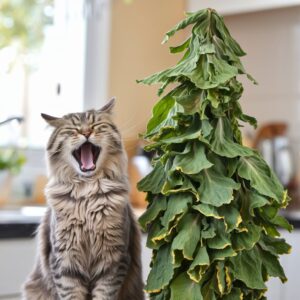 The Importance of Investing in High-Quality Catnip for Your Cat’s Wellbeing
The Importance of Investing in High-Quality Catnip for Your Cat’s Wellbeing
Investing in high-quality organic catnip benefits your cat’s general health and enjoyment. Catnip provides mental and physical stimulation, allowing cats to remain active and interested. Cats that spend most of their time indoors, away from the elements, would adore this.
High-quality organic catnip can help relieve tension in cats. Cats’ euphoric reactions to catnip can help them relax and unwind, lowering anxiety and increasing overall well-being. Furthermore, providing your kitty buddy with high-quality organic catnip demonstrates your concern for their happiness and enrichment.
Investing in excellent products for your pet improves their overall quality of life and demonstrates your devotion to their well-being. To summarise, high-quality organic catnip benefits your kitty buddy, including cerebral and physical stimulation, stress alleviation, and general enjoyment.
Understanding the difference between high-quality and low-quality catnip, choosing the best products for your pet, storing it correctly, ensuring its safety, and investing in quality products for their well-being will let you give your cherished kitty companion a fun and secure environment with high-quality organic catnip, bringing you joy and satisfaction in seeing them happy and healthy.
For more information on keeping your cat happy and healthy, check out this article on plants that keep stink bugs away. It offers helpful tips for creating a safe and enjoyable environment for your feline friend, including the importance of using high-quality catnip to keep them entertained and stimulated.
FAQs
What is catnip?
Catnip is a mint family herb known for its effects on cats. When cats come into contact with catnip, they may exhibit behaviours such as rolling, rubbing, and purring.
What are the signs of low-quality catnip?
Low-quality catnip may have a dull colour, lack a strong aroma, or contain a lot of stems and leaves. Cats may also show little to no interest in low-quality catnip.
How can I avoid low-quality catnip?
To avoid low-quality catnip, look for products labelled as “organic” or “certified.” It’s also a good idea to purchase catnip from reputable brands or stores specialising in pet products.
What are some alternatives to traditional catnip?
If you’re concerned about the quality of traditional catnip, you can try alternatives such as silver vine, valerian root, or honeysuckle. These plants produce similar effects in cats and may be more readily available in high-quality forms.
References
Discover The Expert’s Guide To Safely Feeding Soup To Cats: Veterinary Tips & Personalized Advice. https://catspatrol.com/is-cats-and-soup-safe/
What is Catnip and Why Do Cats Love It? – Cats Guru. https://www.catsguru.com/what-is-catnip/
Food Puzzles Makes Cats Healthier, Calmer, And Less Aggressive | IFLScience. https://www.iflscience.com/food-puzzles-makes-cats-healthier-calmer-and-less-aggressive-37706
The post Catnip How to Spot Low-Quality and Buy Only the Best appeared first on Unity Pets.
The Article Catnip How to Spot Low-Quality and Buy Only the Best Was Found On https://limitsofstrategy.com
The Article Catnip How to Spot Low-Quality and Buy Only the Best First Appeared ON
: https://ad4sc.com

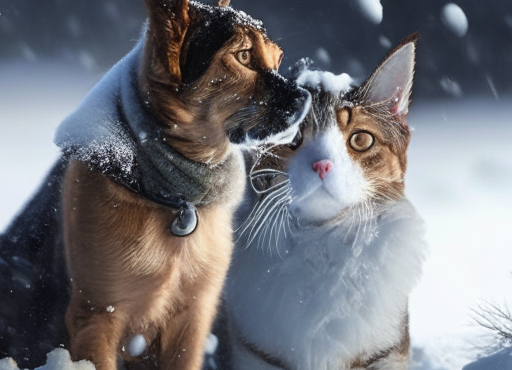
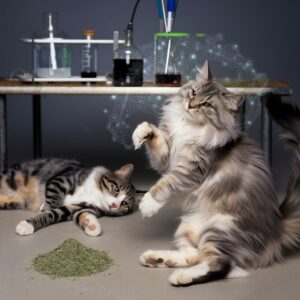

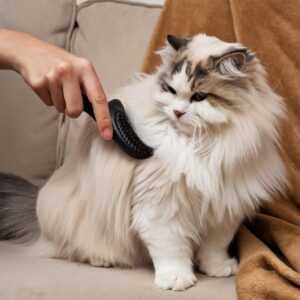







This post highlights some critical points about catnip quality that many cat owners might not consider. What resonates with me is the emphasis on potency, as I’ve noticed my own cat has a very specific preference for certain brands. When I’ve occasionally opted for cheaper options, she seemed indifferent, which made me wonder if it was just her mood or if the catnip quality played a role.
It’s interesting to hear about your cat’s specific preferences. A lot of owners find that their cats can be quite discerning when it comes to catnip, and it really can vary from one brand to another. The difference in quality usually comes down to the species of the plant, how it’s grown, harvested, and even how it’s processed. Some brands might use fresher or more potent leaves and flowers, while others could be cutting corners, which affects the overall experience for our feline friends.
It’s so true about cats being picky about their catnip. I’ve noticed that my cat, Luna, really only reacts to certain brands. I think it’s fascinating how those subtle differences, like how the catnip is cultivated or processed, can lead to such varied responses. There seems to be a real trend towards high-quality, organic options in the pet food industry, and I wonder if that might extend to catnip, too.
I can definitely relate to your experience with Luna and her pickiness. It’s interesting to think about how cats can be so discerning with their catnip. I’ve noticed something similar with my own cat, Oliver; he has very specific preferences when it comes to catnip brands, and it really does seem to impact how he reacts.
It’s interesting how much of an impact catnip quality can have on our feline friends. I’ve noticed something similar with my own cats; they can be quite particular about the brands and even the specific blends. There’s definitely a difference in how they react to different types. The more potent varieties seem to trigger a playful frenzy, while the cheaper options often get the cold shoulder.
It’s interesting how much our pets can develop their preferences, isn’t it? I’ve seen similar behavior with my own cat. At first, I figured catnip was pretty much the same across the board, but I quickly learned that not all catnip is created equal. The potency really does seem to vary quite a bit between brands, which was a surprise to me.
It’s so true that pets have their own unique tastes! I totally get what you mean about catnip—my own cat has some real opinions on it too. I used to think any old bag of catnip would do, but I quickly found out that she’s got her favorites.
It’s interesting how pets can be so particular about their preferences. I’ve noticed the same thing with my dog and her treats. She definitely has her go-to brands, and if I try to give her something different, she’ll just sniff it and walk away. It makes you realize how much their little personalities shine through, doesn’t it?
I can relate to that completely. It’s surprising how picky our pets can be, isn’t it? My cat has her own preferences as well, and I’ve tried different brands and types of catnip, too. I even went as far as to buy organic options thinking they’d be a hit, but she still has that one go-to brand that she just can’t resist.
It’s funny how our pets can be so particular. My dog is the same way with treats—she can sniff out her favorite from miles away! It sounds like you’ve tried all the right options with your cat. It’s interesting how they seem to have their own personal tastes, almost like little connoisseurs.
It’s interesting how much our pets can have their own tastes, isn’t it? My cat also seems to have her favorites when it comes to catnip, and I’ve noticed a similar pattern. I used to buy whatever was on sale, thinking all catnip was created equal, but she’d barely acknowledge the cheap stuff. It made me realize that, just like us, cats can be discerning about their enjoyment.
I can completely relate to that! It’s fascinating to observe how our pets develop their own preferences over time. With my own cat, I noticed a similar trend where she turns her nose up at some brands and seems to have a stronger reaction to particular types of catnip, especially those that are more natural or organic. It made me think about how important it is to consider quality in pet products, just like we do for ourselves.
It’s really fascinating how our pets have their own personalities and preferences. I’ve noticed similar quirks with my dog when it comes to treats—there are some brands that she simply turns her nose up at, even if they look appealing to me. It makes sense that just like us, animals have their own tastes shaped by their experiences and perhaps even earlier interactions.
It’s really fascinating, isn’t it? I’ve noticed similar behavior with my dog and treats; he can be so picky sometimes. I used to buy bags of different brands hoping to find the one he liked, but he definitely has his favorites. I think it speaks to how discerning animals can be, just like us with our own preferences.
You raise some really interesting points about catnip quality and how it can affect our feline friends. It’s fascinating how individual cats can be so particular, isn’t it? I’m curious if your cat gravitates toward certain brands because of the way they process the catnip or if there’s something unique about the plant’s source.
It is fascinating how individual cats can be so particular. I’ve noticed that my cat seems to have a definite preference for certain brands over others, and I’ve often wondered if it’s more about the processing or the source. Some brands seem to use more natural methods, and I can almost sense a different quality to the catnip.
It is indeed intriguing how particular cats can be about catnip. I’ve noticed that some cats seem to react differently based on the quality and even the cut of the catnip. Some brands go for a more finely ground version, while others offer whole leaves, which might influence the intensity of the reaction.
It’s intriguing how our cats can have such distinct tastes, isn’t it? That specific preference for certain brands really highlights something that often goes unnoticed: the variability in catnip quality. A lot of catnip isn’t created equal, and a lot of it depends on how and when the plant is harvested, plus how it’s dried and stored.
It really is intriguing how much their tastes can vary. I remember when I first got my cat, I was surprised to find that what worked wonders for my friend’s cat didn’t even register with mine. It’s almost like they have their own little preferences, which makes you wonder about how much of it is tied to their individual experiences or even their mood at the time.
You bring up such a great point about catnip quality and how it can really affect our cats’ reactions. It’s interesting how we often underestimate the nuances related to our pets’ preferences. I’ve noticed similar behavior with my own cats; they seem to have distinct tastes when it comes to catnip brands. It’s almost like they can sniff out the more potent stuff.
This is such a useful guide! I totally agree that the potency and aroma are huge factors. My cat is a serious catnip connoisseur, and we’ve definitely had those sad moments when we bought a brand that just didn’t hit the mark.
It’s interesting how much of a difference the quality of catnip can make for our feline friends. I can totally relate to those moments of disappointment when you try a new brand, only for it to fall flat. It’s almost like they have a sixth sense for sniffing out the good stuff. My cat has a favorite brand too, and I’ve found that the more fresh and potent it is, the more excited they get—almost like they can pick up on the subtle differences.
It’s true—cats really do seem to have an innate ability to sense the quality of catnip. I’ve had similar experiences with my own cat, who has definitely established a hierarchy of catnip brands in our house. It’s almost amusing how she will turn her nose up at something that isn’t up to her standards. I wonder if there’s an equivalent ‘catnip connoisseur’ community out there, complete with tasting panels.
It’s funny how finicky our furry overlords can be about their green gold. Your cat’s nose sounds like a fine-tuned luxury car engine—just a whiff can send them revving! It’s like they have their own version of a catnip sommelier on the job. I’ve had that same heart-wrenching experience of rolling the dice with a new brand, only to watch my cat give me the “What is this?” look. It’s like serving a gourmet meal to a food critic who only eats out of a can.
You’re spot on about the quality of catnip making such a difference! It’s funny, isn’t it? Those moments when you pull out a new brand, and your cat just looks at you like you’ve handed them a rubber ball instead of catnip. It feels like they have this hidden radar for the freshest stuff. When you find that perfect brand, it’s like you’ve unlocked a whole new level of joy for them, right?
It really is fascinating how much cats can differentiate between catnip brands. It’s like they have a built-in radar for quality. I’ve experienced that disappointment too — trying out something new only to see my cat give it that disinterested sniff and walk away. It’s almost comical how selective they can be, and definitely seems to speak to their unique preferences.
It’s great to hear from a fellow catnip enthusiast! You’re right about the disappointment that comes with those less-than-stellar brands. It’s like discovering your favorite meal is suddenly made with bland ingredients. For our feline friends, catnip can be such a rollercoaster of experiences, and finding the right kind is part of the adventure.
It really is an interesting journey to navigate the world of catnip. I’ve often thought about how much our cats rely on us to make those important decisions about their experiences, just as we do for our own preferences. It can be a bit disheartening when you try a new brand, and it doesn’t hit the mark. It reminds me of how I feel when I try a new snack or a restaurant that has great reviews, but it just doesn’t live up to the hype.
You’ve touched on something quite poignant about the choices we make for our pets, especially with catnip. It can feel like a gamble sometimes, trying out different brands and hoping they’ll deliver that euphoric experience we’re anticipating. When it turns out to be a bust, it’s frustrating—not just because of the money spent, but because you want to give your cat something that brings them joy.
It’s great to hear you found the guide useful! Your kitty’s refined taste in catnip sounds pretty sophisticated. It’s interesting how just a subtle difference in quality can impact their reaction, isn’t it? I’ve come across that too—some brands just seem to miss the mark entirely, while others have my own cat bouncing off the walls.
It’s so true about the subtle differences in catnip quality. I’ve noticed that my cat also has preferences when it comes to brands. Some leaves her completely indifferent, while others have her rolling around in pure joy. It really makes you wonder what exactly goes into those blends, doesn’t it?
I can relate to that – catnip quality really can make all the difference for our furry friends. It’s almost like they have a refined palate for it. I’ve noticed that different brands have varying levels of potency, and some seem to really engage my cat, while others just don’t resonate at all. It’s interesting to consider how things like growing techniques and even the time of harvest impact the flavor and aroma.